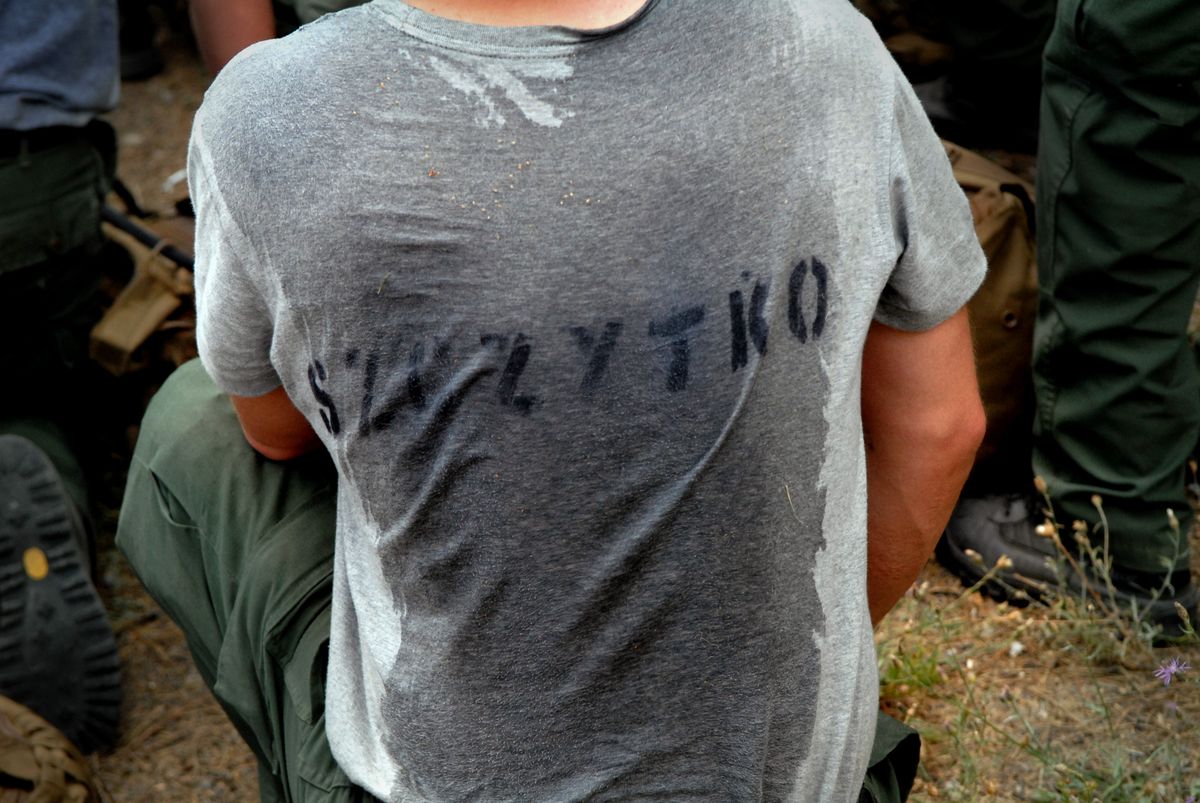surviving the sweat test
Academy participants seek to join patrol’s rescue team

Antonio Lepe has spent months building the strength and endurance he might need to save a federal agent from mountainous terrain, or rescue illegal immigrants stranded in an unforgiving desert or a civilian drowning in near-hurricane conditions.
His goal is to pass the Border Patrol Search, Trauma and Rescue academy, which means five weeks spent pushing his body to its limits by training for high-risk rescues. This is the 35-year-old’s fourth attempt.
“This is very trying,” said Lepe, a U.S. Border Patrol agent from Texas. One physical exercise isn’t harder than the other, he said: “Everything has its own level of difficulty.”
The BORSTAR academy began Monday night at Fairchild Air Force Base. This is the 16th academy, but the first held near the northern U.S. border.
“We wanted to put an emphasis on the north border,” in part to entice more agents to work there, said Julie Gallagher, one of two women on the BORSTAR team. “This is beautiful here.”
BORSTAR, based in El Paso, Texas, was created in 1998. It rescues about 800 to 850 Border Patrol agents, illegal immigrants and civilians each year. It also seizes between 50,000 and 100,000 pounds of drugs annually.
“We’ve helped people out with everything from shootings to bee stings,” Gallagher said.
The team is made of 175 members who are the paramedics and medics of the government’s border authorities. To join, a person must have been a Border Patrol agent for two years, be recommended to the academy and withstand the physical testing. Agents who make the cut are deployed throughout the country.
Getting through the academy is apparently the biggest obstacle.
The class started with 34 men, officials said. Within 24 hours, two had quit.
Only 50 percent of a typical class graduates, said Jesse Munoz, a BORSTAR member.
After the applicants finished sit-ups, push-ups and leg exercises Tuesday morning, the men went to Minnehaha Park area to run two miles up Beacon Hill in forested terrain.
“I can tell some are already circling the drain,” Munoz said. “You can see it on their face when they are cocooning – not interacting with other people.”
After the run up the mountain, they ran back down and swam across the Spokane River. It was slow going for some.
To prepare for the academy, Lepe ran six miles a day and worked to lift his own body weight, he said. Lepe says he understands the importance of the physical training: “Ultimately we’re the ones to save other agents.”
Samuel Reyes, 28, is attending the BORSTAR academy for the first time. He primarily used cardiovascular workouts to prepare.
Attendees are not told what type of physical training or rescue exercises they will perform until moments before. But they’ll go through several tasks, including a simulated rescue in swift water and rappelling down a cliff.
Asked to name the most difficult challenge, Reyes said: “I don’t know if we’ve gone through it yet.”